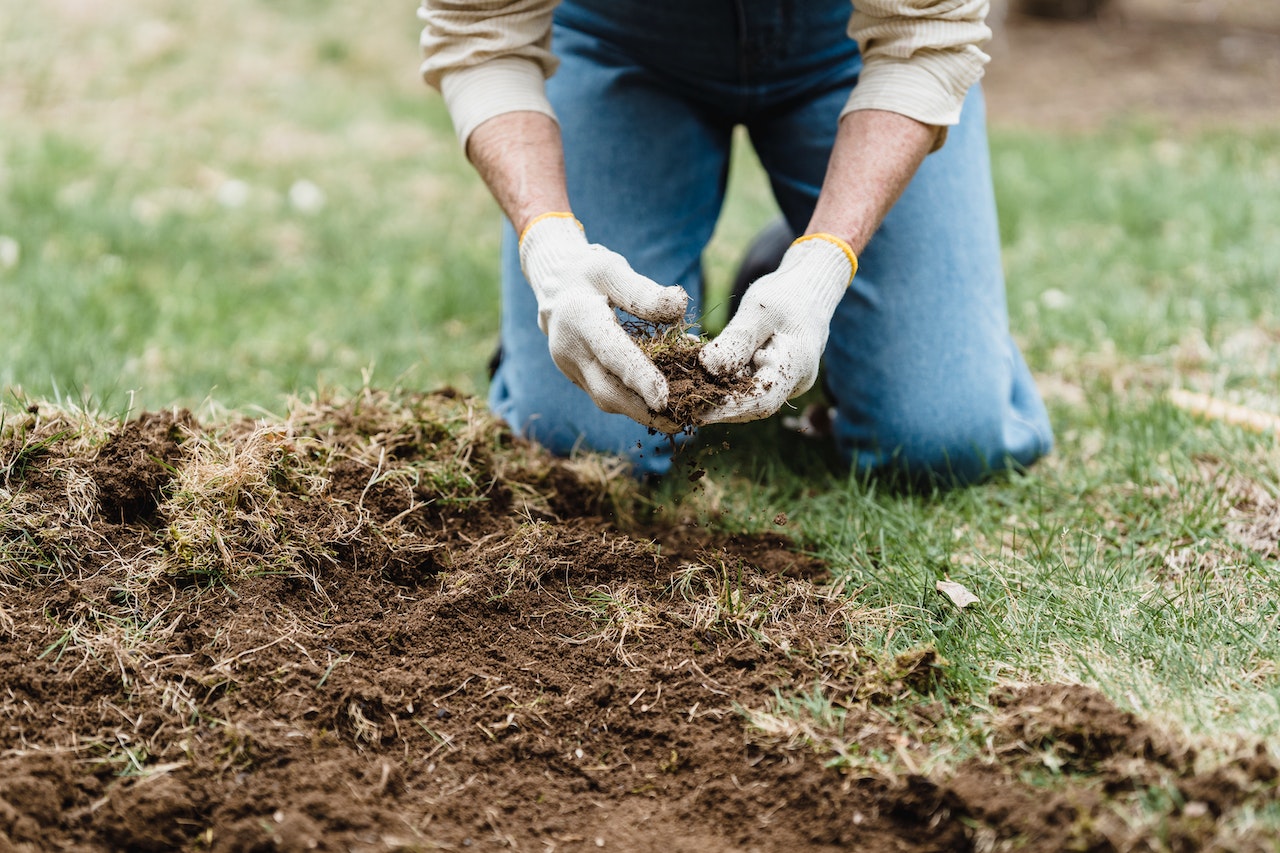Compost is a valuable resource in your garden that can be used as a mulch, fertilizer, or top dressing your lawn. It adds nutrients to the soil, speeds up growth, and improves the overall health of your plants.
It’s a great source of nutrients and helps to build soil while also being a great way to add some diversity to your yard.
Some people use compost to eliminate excess kitchen scraps instead of throwing them away.
It’s really up to you how you want to use compost, but here are some ideas that might help:
- To improve overall soil structure and quality
- Home compost will help your vegetable garden retain water
- Top dressing your lawn
- Replacement for synthetic fertilizer
- As a pesticide to reduce garden weeds and infections
- To improve the flavor of your vegetables
- To buffer soil from erosion and harsh wind
Table of Contents
5 compost uses
Here are the different ways to use finished compost and reap maximum benefits.
1. Improve Soil Quality and Structure
Adding compost material to your garden soil before planting crops helps amend soil quality.
For instance, it supplies a significant amount of humus “black gold” that lightens dense sandy and clay soils, creating aeration for better root development.
This also helps improve airflow through the soil, promoting healthier crops.
2. Mulch for the Garden
Adding inches of compost as a layer of mulch around your crops helps nutrient distribution and moisture retention and keeps the soil warm for microbial activity.
Mulching is a great way to protect plants from pests and harsh weather conditions.
For instance, it reduces the chances of sheet and splash erosion during extreme storms or windy days.
3. Compost as a Fertilizer
Compost enriched soil contains microbes and microorganisms beneficial for soils and lacks in synthetic fertilizers.
It also buffers the soil balancing alkaline and acid levels, allowing optimum nutrient availability to plants over a long period.
4. Composts as a Pesticide
Regular use of worm composting aids in controlling weeds, pests, and diseases in your garden waste. The high temperatures in the compost-making process destroy most weeds, if not all.
Similarly, using residues to make compost weakens pests reducing plant infections and diseases in your crops.
5. Compost for Moisture Retention
Composts improve moisture-retention capacity in sandy and clay soils. It does this by binding clusters of soil particles and altering the soil structure.
An example is when it rains; water gets absorbed into the soil rather than running off over the surface—reducing drying up in the dry season.
How to Use Compost in Landscapes, Gardens, and Lawns
Compost can be used as a soil amendment on its own or mixed with other garden amendments like bone meal, lime sulfur, and greensand.
Here are some tips:
- The best way to use compost is to apply it directly to the soil at least once a year (if you’re using it in your garden or yard) or twice a year (if you’re using it in a landscape).
- For best results, place compost in a well-drained area that is not near trees or shrubs. Be sure to leave at least 3 inches of space between your compost pile and the trunk of any nearby trees or shrubs.
- To mix your compost with soil, simply add it to your garden or lawn area with a shovel or pitchfork—remove grass clippings and yard trimmings.
- You may also want to add water before mixing so the mixture will stick together more easily when you are finished spreading it out on the curbside or around your plants and trees.
What to Do with Compost if You Don’t Garden
If you don’t garden, or if you don’t have any green areas in your home, composting is a great way to start recycling and reducing waste.
Here are a few ways to use that compost:
1. Make Compost Tea
Making compost tea is simple; soak the compost in water. add sawdust, and cover for a few days.
Strain the solids, and the remaining liquid is what we call compost tea which can be used as fertilizer for spraying indoor plants.
2. Top Dress Your Lawn
You can add compost to your lawn by spreading it on top of the soil (if you live in an urban area) or mixing it into your existing soil.
Adding a layer of compost to your grass lawn acts as a fertilizer, enhancing steady and healthy growth.
Rake the compost throughout the lawn to encourage root system and thatch.
3. Make Potting Mix
If you don’t have a garden, you can make potting soil by mixing equal parts of seed-starting and aged compost.
This helps ensure that all plant components have access to nutrients and water needed for healthy growth.
4. Share with Neighbors or sell
Generosity doesn’t hurt.
If you have excess compost and don’t have a garden, your neighbors can benefit too. Selling is an alternative option that adds a few coins to your pockets.
Compost is a valuable resource with many uses to help your living environment. It makes valuable fertilizer for plants and trees in your yard or garden and helps retain moisture in the soil.
Hopefully, after reading this article, you will better understand compost uses.

